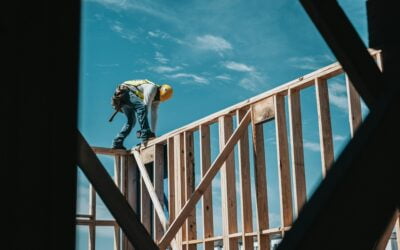2020 was a turbulent year in which much of retail bounced between being open and closed, impacting footfall significantly. To make meaningful comparisons to changes in footfall, all 2021 figures are compared with 2019 (pre-pandemic). This means our 2021 figures are now year-on-two-years (Yo2Y), rather than year-on-year (YoY).
According to BRC-Sensormatic IQ data:
- As stores reopened during the month, Total UK Footfall decreased by 40.0% in April (Yo2Y), with a 28.7 percentage point improvement from March. This is above the 3-month average decline of 59.2%.
- Footfall on High Streets declined by 43.9% (Yo2Y). This is above the 3-month average decline of 61.2%.
- Retail Parks saw footfall decrease by 30.5% (Yo2Y). This was a 6.3 percentage point improvement from the previous month, and above the 3-month average decline of 35.4%.
- Shopping Centre footfall declined by 49.8% (Yo2Y). This compared favourably against the 3-month average decline of 67.2%.
- Northern Ireland saw the steepest footfall decline of all nations at -55.4%, followed by Scotland at -52.1% and England at 38.4. Wales saw the shallowest decline of the UK’s nations at -38.2% (all figures are Yo2Y).
Helen Dickinson OBE, Chief-Executive of British Retail Consortium, said:
“With the easing of restrictions on retail and some hospitality on 12th April, consumers have been returning to their local high streets, shopping centres and retail parks. This is reflected in the improving levels of footfall seen across the country, as consumers visit their favourite stores post-lockdown. While shops have worked incredibly hard to provide consumers with a safe and enjoyable shopping experience, it is unlikely we will see a return to pre-pandemic levels of footfall anytime soon, as social distancing measures naturally restrict retailers’ capacity. Retail parks continued to fare better than shopping centres and high streets, as they benefit from the presence of large stores, more space and on-site parking. However, it was encouraging to see footfall improve across all retail sites compared to the lockdown months.
“Growing consumer demand and footfall in the months ahead will be vital for the survival of many retailers, as they start to see costs increasing as stores reopen and colleagues return from furlough. With full business rates relief ending in England in June, the ongoing rates review needs to deliver on its objectives to reform the broken rates system and reduce the financial pressures on retailers, otherwise many stores and viable jobs will be under threat.”
Andy Sumpter, Retail Consultant EMEA for Sensormatic Solutions, commented:
“April’s reopening of retail saw a welcome boost for the High Street. While footfall still remains 40% down compared to pre-pandemic levels in 2019, consumer demand signals for a return to in-store shopping were promising; despite occupancy limits restricting the numbers of customers allowed inside, shoppers happily braved long queues to get back in-store and shop their favourite brands in real life, after months confined to shopping from behind a screen.
Retailers will be hoping that the lift in shopper traffic seen during the first few weeks of unlocking can be sustained past pent-up demand in order to fuel long-term recovery. Our research shows an overwhelming amount of consumer support for bricks-and-mortar retail, with 71% of shoppers vowing to make a conscious effort to shop in-store now retail’s reopened, with many having missed the experience of in-store shopping when lockdown shuttered shops and other saying ‘screen fatigue’ had set in. Retailers will be counting on shoppers acting on that sentiment and voting with their feet to support the shops that serve their communities.”
MONTHLY TOTAL UK RETAIL FOOTFALL (% CHANGE WITH 2019)
UK FOOTFALL BY LOCATION (% CHANGE WITH 2019)
TOTAL FOOTFALL BY REGION (% CHANGE WITH 2019)
| GROWTH RANK | REGION | % GROWTH Yo2Y |
| 1 | East Midlands | -32.3% |
| 2 | East of England | -33.4% |
| 3 | South East England | -34.5% |
| 4 | North West England | -35.1% |
| 5 | South West England | -36.0% |
| 6 | West Midlands | -37.3% |
| 7 | Yorkshire and the Humber | -37.5% |
| 8 | Wales | -38.2% |
| 9 | England | -38.4% |
| 10 | North East England | -38.4% |
| 11 | London | -47.7% |
| 12 | Scotland | -52.1% |
| 13 | Northern Ireland | -55.4% |
TOTAL FOOTFALL BY CITY (% CHANGE WITH 2019)
| GROWTH RANK | CITY | % GROWTH Yo2Y |
| 1 | Cardiff | -35.5% |
| 2 | Liverpool | -36.0% |
| 3 | Leeds | -36.6% |
| 4 | Nottingham | -36.6% |
| 5 | Bristol | -41.0% |
| 6 | Manchester | -43.6% |
| 7 | London | -46.9% |
| 8 | Birmingham | -47.7% |
| 9 | Portsmouth | -50.0% |
| 10 | Glasgow | -51.8% |
| 11 | Belfast | -55.3% |




